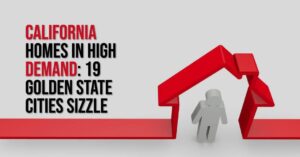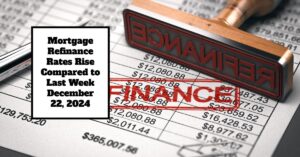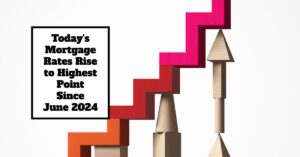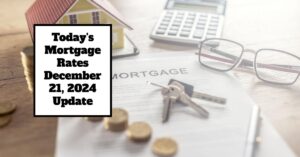California's housing market continues to be a complex landscape, but according to a recent report by Realtor.com, there are pockets of the state experiencing a surge in buyer activity and shrinking inventories. In fact, a whopping 19 California metro areas landed on Realtor.com's coveted “hottest real estate markets” list for 2024! Let's delve deeper into the ranking system and explore which California cities are currently sizzling in the real estate market.
This is a significant showing for the Golden State, highlighting the diverse appeal of various California locations. The rankings, meticulously compiled by Realtor.com, leverage a unique methodology that provides valuable insights for both home buyers and sellers.
Realtor.com's Market Hotness Index isn't just smoke and mirrors. It's a data-driven approach designed to shed light on the intricacies of local housing markets. Here's how they decipher which areas are experiencing a fiery demand:
- Buyer Activity: Realtor.com analyzes listing views in each market. A high number of views translates to strong buyer interest, indicating a hot market.
- Inventory Levels: Conversely, the median days on market serves as a gauge of available inventory. A lower number suggests properties are selling quickly, signifying a seller's market with tight supply.
By combining these metrics, Realtor.com creates a score that reflects the interplay between buyer demand and available homes. This allows them to rank metro areas across the country and identify the markets where things are heating up the fastest.
This approach provides a clear advantage for both buyers and sellers. For buyers, it highlights areas where competition is fierce and homes might move quickly. Informed buyers can then adjust their strategies to be more competitive. Sellers, on the other hand, can leverage this knowledge to understand the current market conditions and potentially price their properties more effectively.
It's important to remember that the ranking is a snapshot in time. Housing markets are constantly evolving, and local factors can influence the dynamics. However, Realtor.com's Hotness Index provides a valuable starting point for anyone considering buying or selling a home in California.
Now that we understand the ranking system, let's jump into the California contenders on this year's Hottest Real Estate Markets list!
California Metros on the Hot Housing Market List
California's diverse housing market is reflected in the spread of cities across Realtor.com's Hotness Index. Here's a closer look at some of the California contenders, ranked from hottest to less hot:
Top Performers (Ranked 39-53): A Seller's Paradise
Sacramento, Santa Rosa, Modesto, Santa Cruz, and the Oxnard-Thousand Oaks-Ventura metro areas are the hottest properties in California according to Realtor.com's list.
These markets are experiencing a surge in buyer activity, with homes selling quickly due to a shrinking inventory. This translates to a prime selling opportunity for homeowners in these areas, but a competitive environment for buyers who may need to be prepared to act fast and potentially engage in bidding wars.
Heating Up (Ranked 63-77): Rising Demand, Potentially Tightening Supply
Visalia-Porterville, San Diego-Carlsbad, Stockton-Lodi, and even the San Francisco Bay Area (including San Francisco-Oakland-Hayward) are showing signs of heating up. Buyer interest is on the rise in these areas, and the available inventory could potentially start to dwindle. This creates a dynamic market where sellers may have more leverage, but buyers can still find opportunities if they are prepared to move quickly and adjust their strategies.
Emerging Markets (Ranked 86-155): Buyer Interest Grows, Inventory Watch
Fresno, Vallejo-Fairfield, Yuba City, Salinas, and Santa Barbara are also experiencing a rise in buyer interest, landing them on Realtor.com's Hotness Index. While these locations are attracting more potential buyers, they might still offer a wider range of properties available compared to the top-ranked cities.
This could be a good option for buyers seeking more choices, but it's important to stay informed about inventory trends as the market evolves. Interestingly, cities like Los Angeles and Riverside also appear on the list, although further down the ranks. This suggests a potentially more balanced market in these areas, with motivated buyers encountering a decent range of available properties.
Tips for Buyers and Sellers
California's sizzling housing market presents both challenges and opportunities. Here are some tips to help you navigate the hot market, whether you're a buyer hoping to land your dream home or a seller aiming to capitalize on the current conditions:
For Buyers:
- Get Pre-Approved: In a competitive market, a pre-approval letter demonstrates your seriousness and financial strength to sellers. This can give you an edge over other buyers, especially in bidding wars.
- Be Ready to Act Quickly: Homes are likely to move fast, so decisiveness is key. Have your realtor set up alerts for new listings that meet your criteria and be prepared to make an offer quickly.
- Consider Expanding Your Search: While your heart might be set on a specific neighborhood, be open to exploring other areas within your chosen metro area. This can increase your chances of finding a suitable property that fits your budget.
- Work with a Savvy Realtor: An experienced local realtor can be your secret weapon. They can provide valuable insights into specific neighborhoods, guide you through the negotiation process, and help you craft competitive offers.
For Sellers:
- Price Your Property Strategically: While the market is hot, overpricing can backfire. Consult with your realtor to determine a competitive yet realistic price point that will attract qualified buyers.
- Stage Your Home for Success: First impressions matter. Invest in staging your home to showcase its best features and create an inviting atmosphere for potential buyers.
- Be Flexible: While you might have an ideal selling timeframe in mind, be prepared to be somewhat flexible to accommodate buyer needs and maximize your chances of a successful sale.
Remember, the California housing market is dynamic and can vary significantly by location. The tips above provide a general framework, but consulting with a qualified local realtor is essential for navigating the specifics of your situation. With careful planning, a strategic approach, and the right guidance, you can conquer California's hot market and achieve your real estate goals.
ALSO READ:
Housing Market 2024: 10 California Cities for First-Time Homebuyers
Real Estate Forecast Next 5 Years California: Bright Future?
California Housing Market Booms: Investor Purchases Are Soaring











